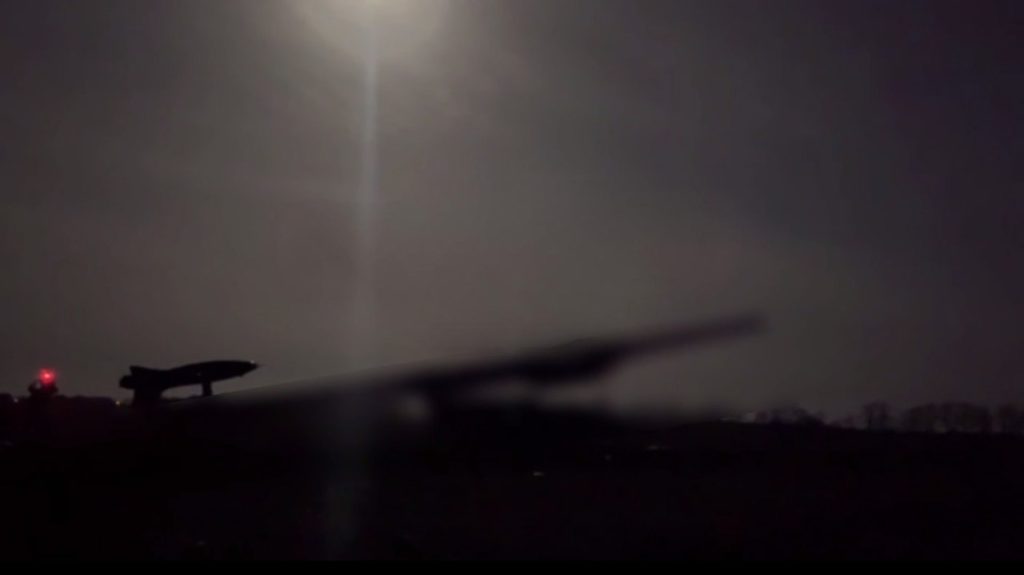
Ukraine’s military intelligence service has begun using a modified version of the domestically produced UJ-26 “Bober” drone to strike targets deep inside Russian-controlled territory, according to a report by Oleksandr Yan, a journalist with the defense-focused outlet Militarnyi.
In a Tuesday morning update, Yan said that long-range UJ-26 drones with enhanced capabilities have been officially deployed to Ukraine’s Defense Intelligence Directorate (GUR). These upgrades include a thermal imaging camera and a newly integrated communications system, which allowed real-time transmission of video footage up to the moment of impact during a recent strike on the Russian Saky airbase in occupied Crimea.
The drone, developed by Ukrainian firm Ukrjet, was used in the operation that reportedly damaged or destroyed a Russian Su-30 fighter, radar systems, and a Pantsir-S1 air defense system.
The footage published by GUR showed what appears to be high-resolution thermal imagery, consistent with recent precision strikes conducted by the GUR’s special “Prymary” unit.
According to Yan, this real-time video transmission capability may be powered by a satellite communications terminal. The possibility of Starlink-based uplinks was previously discussed by Russian military bloggers after earlier Ukrainian drone attacks showed similarly stable video links.
Despite the improved video quality, Yan noted that drone control during the operation appeared imprecise, possibly indicating a high latency in signal transmission from the drone to the operator. This would be consistent with satellite-based communication systems and further supports the theory that Ukraine is integrating beyond-line-of-sight control architecture into its strike drone fleet.
The journalist added that the strike on Saky did not require the full operational range of the UJ-26, which gave Ukrainian forces the option to equip it with a larger warhead. The standard payload is estimated at around 20 kilograms, but the reduced flight distance may have allowed for a heavier explosive charge in this mission.
Footage also showed the drone being launched via catapult rather than from a runway. While this method requires larger, fixed launch platforms and complicates rapid, large-scale deployments, it eliminates the need for landing gear. This change improves aerodynamics and extends the drone’s range, Yan said.
However, catapult launches may limit the ability to conduct mass strikes, as each drone must be manually mounted and launched in sequence.
As noted by Militarnyi, the improved performance of the UJ-26 drone reflects a continuing shift toward higher-endurance, satellite-guided weapons in Ukraine’s unmanned arsenal.